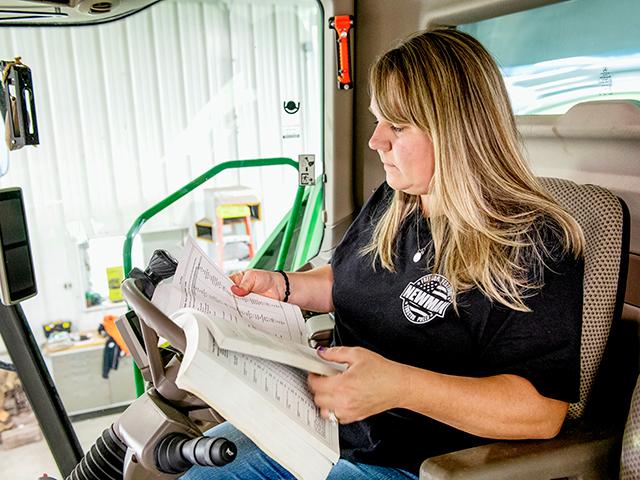
DTN's Senior Farm Business Editor Katie Dehlinger enjoys preparing prime rib for Christmas and she makes arguments for the emotional attachment and practical benefits of doing so.
Crude futures jumped 2% on Monday, Dec. 29, recovering most of the previous session's losses, as Ukraine peace talks stalled, keeping sanctions...

No. 3 on DTN's list of the Top 10 Ag Stories of the Year focuses on how much of an impact the One Big Beautiful Bill had on farm and family...

DTN Senior Crops Editor Pamela Smith says we never think it will happen to us, until it does. This farmer urges others to plan for the unexpected.
P[] D[0x0] M[0x0] OOP[F] ADUNIT[] T[]
Katie Dehlinger grew up near the Illinois-Wisconsin border in Rockton, Ill., and graduated from the University of Missouri in 2009 with a bachelor's of journalism in news/editorial writing and minors in history and sociology.
She's filled a number of roles at DTN, including nearly five years as the Markets Editor, where she covered commodities markets and marketing strategies in addition to USDA report lockups. She spent several years as the Executive Producer for RFDTV's daily news programs, Market Day Report and the Rural Evening News. She's now back at DTN, this time as the Farm Business Editor, where her reporting focuses on tax and estate planning, farmland values, health care and other issues that affect farmers' bottom lines.

DTN's Senior Farm Business Editor Katie Dehlinger enjoys preparing prime rib for Christmas and she makes arguments for the emotional attachment and practical benefits of doing so.

DTN's Senior Farm Business Editor Katie Dehlinger enjoys preparing prime rib for Christmas and she makes arguments for the emotional attachment and practical benefits of doing so.

DTN's Senior Farm Business Editor Katie Dehlinger enjoys preparing prime rib for Christmas and she makes arguments for the emotional attachment and practical benefits of doing so.

Recent sales results from Kankakee County, Illinois; Sioux County, Iowa; Finney County, Kansas; and Lancaster County, Pennsylvania.

Recent farmland sales results from Champaign County, Illinois; Ellsworth and Rice Counties, Kansas; Hopkins County, Kentucky; and Dewey County, South Dakota.

DTN Farm Business Editor Katie Dehlinger shares how she likes to write about creative people putting innovative ideas into practice, and why a story about forming their own microcaptive...

Landwatch Recent Farmland Sales

With many farmers and ranchers grappling with slim to negative margins, taking a close look at family living expenses is a must when putting together a compensation plan for the farm business.

December 2025 Recent Farmland Sales

Bankers may be worried about a cash flow crunch on American row-crop farms, but experts at the Agricultural Bankers Conference say farmers should prepare capital expenditure plans that...

Landwatch Recent Farmland Sales

Tool provides useful guidance about the return on investment of your machinery lineup and when it makes sense to keep or trade.

November 2025 Recent Farmland Sales

How a contentious breakup with a lender put this Kentucky farmer on a path to stronger financials.

Lenders offer new credit opportunities as farmers focus on preserving cash.

October 2025 Recent Farmland Sales

Ag lenders weigh in on interest rates and rising financial risks on row-crop farms.

Lenders offer new credit opportunities as farmers focus on preserving cash.

How a contentious breakup with a lender put this Kentucky farmer on a path to stronger financials.
